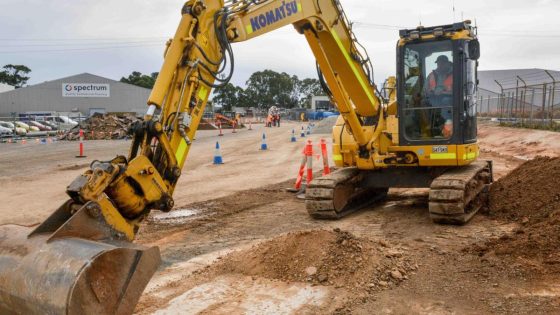Building approvals continued to disappoint with weaker-than-expected results for January providing little indication that Australia’s chronic housing shortage is on track to ease.
Total dwellings approved slipped 1 per cent in January, the Australia Bureau of Statistics reported on Monday, with just 12,850 new homes signed off for construction.
Economists were forecasting an increase of 4 per cent.
The monthly reading brings the number of dwellings approved in the 12 months to January to just 163,000.
That’s well short of the 240,000 new homes that would need to be constructed annually to meet the federal government’s aspirational target of building 1.2 million well-located homes in the five years from July 2024.
January’s result was driven by a steep decline in detached housing approvals, which plunged 9.9 per cent to 7,461.
However more volatile approvals for units, apartments and townhouses surged 19.5 per cent across the month, driven by a rise in apartment approvals in Queensland.
Building approvals were mixed by state, with declines posted in NSW down 14.9 per cent, Victoria down 9.8 per cent and South Australia down 7.2 per cent.
However, Queensland climbed 31.8 per cent, Western Australia rose 11.4 per cent and Tasmania firmed 5.1 per cent.
The legacy impacts of the pandemic, which had heavily disrupted the construction industry, would continue to curb the supply of new homes, HSBC chief economist Paul Bloxham said.
“In particular, the widespread use of fixed price contracts meant that the surge in material and labour costs made many contracts unprofitable, which has contributed to a rise in insolvencies in the industry in the post-pandemic period,” Mr Bloxham said.
“This, among other supply-side factors, is hampering an upswing in construction and contributing to the current housing shortage.”
Help to Buy scheme faces Senate hurdle
The fresh building approvals comes as the Albanese government faces a Senate logjam to pass its Help to Buy scheme, designed to assist low and middle earners to purchase a home.
Under the government’s proposal, it would take an equity stake of up to 40 per cent of the purchase price on new and existing homes, later recouping the funding, plus its share of capital gain on the home, when the property is eventually sold.
Eligible participants will need to pay a minimum two per cent deposit and still qualify for a standard home loan to fund the outstanding amount.

The scheme’s participants, which will be capped at 10,000 a year over a four-year period, will not be required to pay lenders’ mortgage insurance, a one-off premium paid when borrowing more than 80 per cent of the property’s value.
Participants will also be able to purchase an additional stake in the loan, thus reducing the government’s proportion.
To guarantee its passage, the Greens are demanding modifications to existing negative gearing rules that would pair back tax concessions for property investors and landlords.
However, the government has ruled out negotiating with the minor party over its request having previously faced significant electoral backlash over policies it took to the 2019 federal election to modify negative gearing and capital gains tax concessions.
Source Agencies




